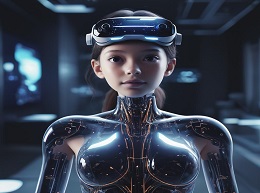AI and Augmented Reality: Shaping Immersive Experiences

In the realm of technology, the convergence of artificial intelligence (AI) and augmented reality (AR) has unlocked a realm of possibilities, transforming how we perceive and interact with the world around us. This article delves into the symbiotic relationship between AI and AR, showcasing how their integration is shaping immersive experiences across various industries.
Understanding AI and Augmented Reality
Defining Augmented Reality
Augmented reality overlays digital information onto the physical world, blending virtual elements seamlessly with real-world environments. From smartphone apps to wearable devices, AR technology enhances our perception of reality by adding layers of digital content such as images, videos, and 3D models.
The Role of Artificial Intelligence
Artificial intelligence, on the other hand, powers the intelligence behind AR applications, enabling real-time analysis, interpretation, and interaction with the augmented environment. AI algorithms process sensory data, recognize patterns, and adapt to user behavior, enhancing the overall immersive experience.
Applications of AI and Augmented Reality
Enhancing Retail Experiences
In the retail sector, AI-driven AR applications revolutionize the shopping experience by allowing customers to visualize products in real-time. For example, IKEA's "IKEA Place" app employs AR technology to enable customers to preview furniture and décor items in their homes before making a purchase, enhancing confidence and reducing returns.
Revolutionizing Education and Training
AI-powered AR is transforming education and training by creating interactive and engaging learning environments. For instance, companies like DAQRI utilize AR headsets integrated with AI capabilities to provide hands-on training in fields such as manufacturing, engineering, and healthcare, enhancing learning retention and skill development.
Empowering Healthcare Solutions
In healthcare, AI-driven AR applications are revolutionizing medical training, patient care, and surgical procedures. Companies like AccuVein leverage AR technology powered by machine learning algorithms to assist medical professionals in locating veins for blood draws and injections, improving accuracy and patient comfort.
The Future of AI and Augmented Reality
Advancements in Immersive Experiences
The fusion of AI and AR is poised for significant advancements, with ongoing research and development focused on enhancing immersive experiences. From real-time language translation to personalized content recommendations, AI-driven AR applications will continue to evolve, offering new possibilities for entertainment, communication, and productivity.
Innovations in User Interfaces
AI-powered AR is also driving innovations in user interfaces, enabling more intuitive interactions with digital content in augmented environments. Gesture recognition, voice commands, and natural language processing capabilities enhance user engagement and accessibility, making AR experiences more seamless and immersive.
Challenges and Considerations
Privacy and Data Security
As AI and AR technologies collect and analyze vast amounts of user data, ensuring privacy and data security is paramount. Companies must implement robust measures to protect user information and comply with data protection regulations to build trust and maintain user confidence.
Ethical Implications
The integration of AI in AR raises ethical considerations, including bias in algorithmic decision-making and the potential for misuse of personal data. Transparency, accountability, and ethical guidelines are essential to address these concerns and ensure responsible deployment of AI-driven AR applications.
Conclusion
The fusion of AI and augmented reality is revolutionizing immersive experiences across various industries, from retail and education to healthcare and entertainment. By harnessing the power of AI algorithms, AR technology creates interactive and personalized experiences that blur the lines between the physical and digital worlds. As these technologies continue to advance, the possibilities for AI-driven augmented reality are limitless, offering transformative solutions and redefining how we perceive and interact with our surroundings.